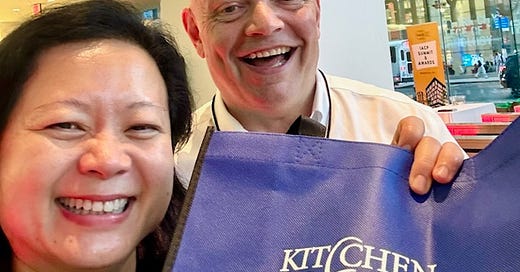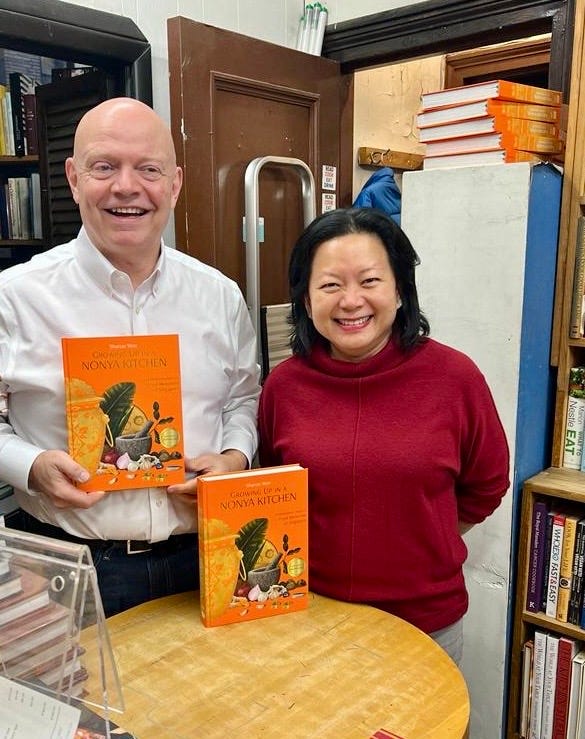Kitchen Arts and Letters is a best friend to many cookbook authors based outside of the US. Specifically, Kitchen Arts (and a few other specialty cookbook stores throughout the country) is supportive to those who might not have the broad distribution that comes with the prowess of a Big Five publisher, or who self-publish themselves.
That is not to infer that these authors lack comparative qualifications. Coming from Singapore and popping into every bookstore on my travels around the globe, I have found many outstanding “local’ cookbooks and can identify several brilliant authors in their own field of expertise. They have a firm grasp of the local culture they were born into, immediate memories of the food they grew up eating and the surrounds where they witness that food being prepared. They have a sincere voice which gives us a kaleidoscopic view of their country.
Matt Sartwell kindly took time off from his ultra-busy schedule between September and year-end, to answer my mini-interview questions. Cookbook stores like his, are a lifeblood and a passport for many like me, to introduce others who may not have the luxury of time to transport themselves, into our world. I hope that you will pop in or explore his shop’s website to find your year-end gifts and treasures. With Season’s Greetings.
How did your bookstore begin?
Nach Waxman was working as a book editor when he decided he wanted to be his own boss and to continue to be involved in connecting people with interesting and useful books. A bookstore was the obvious choice, and at the time there were many general independent bookstores but not so many specialty stores. He was very interested in two everyday pursuits: cooking and sports. When he realized that more people made their living in food and drink than in sports, he decided that there would always be a stronger audience for those books. The store opened in the fall of 1983 in the same building where we are now, although in one of the smaller shops; we moved into the current space about two years later.
How have cookbooks changed over time?
Physically, they have many more photographs, which has changed the paper on which they're printed as well as the size of the books themselves, both the dimensions of the pages as well as just the weight of the books: photos usually need to be printed on coated paper stock, so that makes them heavier.
As for content, cookbooks, in English at least, address a wider slice of the world. Increasing access to ingredients from other regions mean that it's easier for cooks to make dishes from other cultures, and that also means that authors can urge their readers to use traditional ingredients rather than make substitutes from more limited grocery store selections. Spices, condiments, and even fresh ingredients are so much easier to find in the US than they were forty years ago, and that give authors more freedom--and it means cooks are inspired to try a wider range of cooking.
In cookbooks, what would you like to see more of?
Recipes are wonderful things, but they don't mean as much as they could if the author doesn't tell us about how they fit into the culture they come from. So we're always looking for books which tell us something about a dish's history and how the people who make it think about it. Does it always have to have a particular ingredient? Or are there cooks who like it made with one bitter green while other cooks swear by a different one? There's a temptation to try to be definitive when writing a cookbook, but that can be a trap because it makes things rigid.
When it comes to subject matter, we love seeing books from parts of the world that don't get discussed much, at least in English, That's much of South America and Africa, for example. And we like seeing books that dig deep into one particular aspect of a cuisine, like maybe Chinese sausage making or Mexican soups.
What trends are you picking up among International cookbook titles?
Slowly, US publishers are expanding the range of places they cover. And somewhat unusually, much of this is happening in the vegan and vegetarian areas, where we're seeing books on places like the Caribbean that have not had much love from publishers but now they're offering even more specialized books because vegan and vegetarian is a growing market.
But we still look to publishers in other countries for many of the more interesting books, books that cover things like Indian Jewish cooking or regional Korean cuisine or the science of Italian pizza making. And I think that will continue for a long time because that's where the authors with the specialty knowledge most often live.
What are your favourite titles - classic, or new, or plain memorable for a reason?
I'm still recommending Cucina Fresca by Viana La Place & Evan Kleiman, which came out in 1985. It's simple Italian food, not strictly traditional but not radically wild, that is meant to be served cold or room temperature. Which not only makes it great for parties--you do all the work the day before and pull everything out of the fridge a half hour before your guests arrive--but it's also incredibly friendly for leftovers and lunches in a busy week.
On the other hand, Steve Sando's The Bean Book, which was just released this fall, is one of those books which reintroduced me to an ingredients which I had been taking for granted. It's got all kinds of fresh, bright ideas for beans and that renews my sense that there's more to the world than I thought there was.





